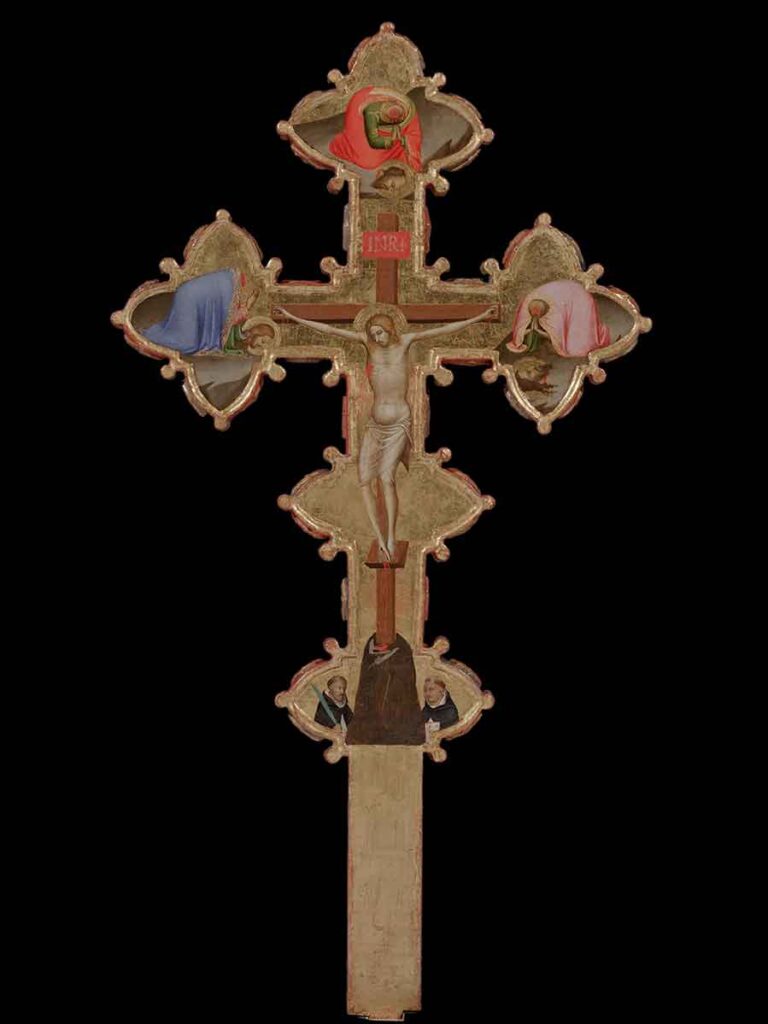Processional Cross
Bernardo Daddi , 1335 - 1340
Description

This a masterpiece from the mature years of Bernardo Daddi, a painter from Giotto’s school working in Florence during the second quarter of the 14th century. This type of cross, with holy images on both sides, is called ‘astile’, because it was shown to the faithful during processions and other public ceremonies, held on a long pole.
On one side Daddi Painted three beheaded saints kneeling: at the top, Saint Paul, with a long black pointed beard and bald head; on the left, Saint James the Great; on the right, Saint John the Baptist, with unkempt hair and beard, his face emaciated and ascetic. The presence of these unusual macabre images indicates that the cross was originally destined to comfort those condemned to death. In past centuries, groups of people gathered together in confraternities, assumed the task of taking religious comfort to those condemned, attempting to persuade them to accept death in a Christian spirit, following the example of Jesus and the martyrs. The Dominican saints depicted at the bottom, Saints Peter the Martyr and Thomas of Aquinas, indicating that the confraternity that commissioned this work was supported by the preacher friars.
On the other side of the cross, the more traditional images of the Virgin Mary, Saint John the Evangelist and the Redeemer are accompanied by the unusual figure, at the bottom, of a skeletal corpse, probably the condemned person himself, dressed in a black tunic for execution. This cross is one of the earliest examples of paintings for comforting the condemned. The typology was very rare in the 14th century, but much more common in the 15th and 16th centuries.
Data Sheet
Author
Bernardo Daddi, 1290-1348
Date
1335 - 1340
Material and technique
Tempera on panel
Measures
58.9 cm x 33 cm;
Acquisition
1932
Inventory number
3195
location
14th Century Room
The 14th Century Room, along with the 18th Century Room and the Perugino Room, housed much of Gian Giacomo Poldi Pezzoli’s collection of paintings. Historically known as the Third Picture Room and formerly the Venetian Room, it brings together works painted between the fourteenth and fifteenth centuries using the gold background technique.
collection
Paintings
The Museum hosts over 300 paintings. Among them, many Italian works from the Renaissance: masterpieces from Tuscany (Botticelli, Piero della Francesca, Pollaiuolo), Lombardy (Luini, Boltraffio, Solario) and Veneto (Bellini, Mantegna). Important is also the group of 18th century Italian painting (Guardi, Canaletto, Tiepolo, Fra Galgario). In the collection, there are mainly portraits and small size paintings.
